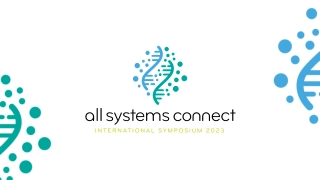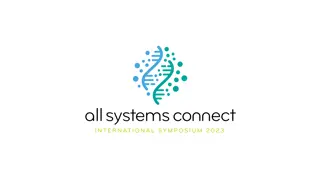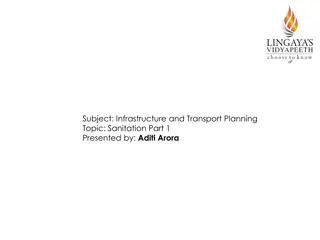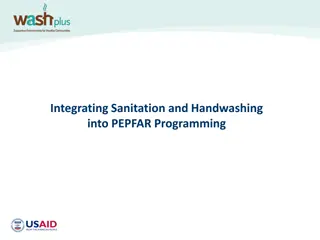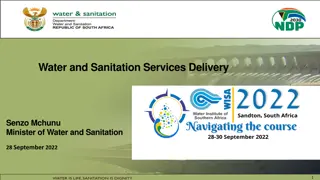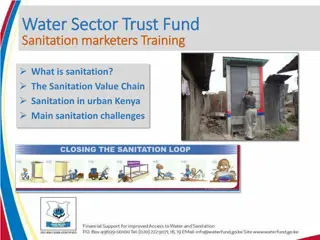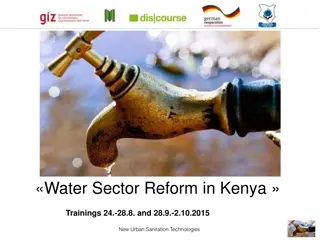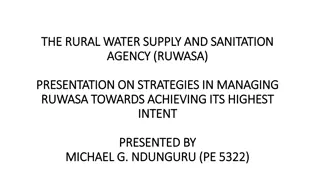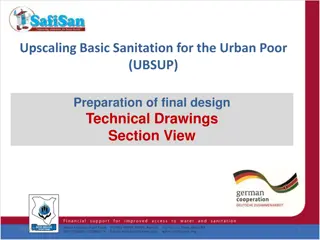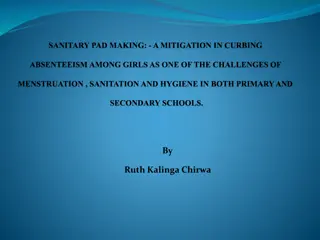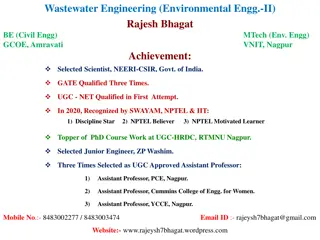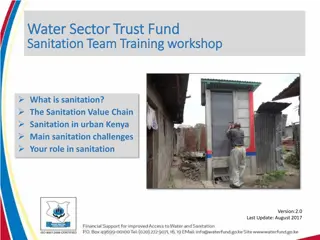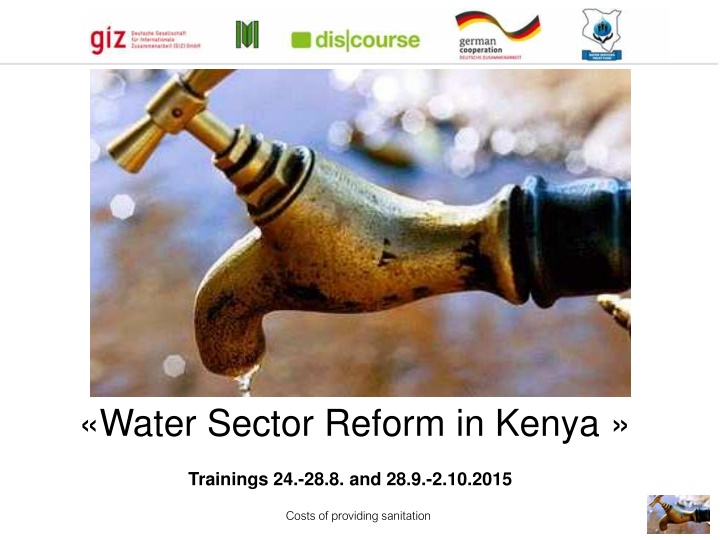
Costs of Providing Sanitation in the Water Sector Reform
Explore the costs involved in providing sanitation services in the water sector reform in Kenya, including operating costs, capital costs, and factors affecting cost structures. Learn about the impact of pollution load, network length, and more on sanitation expenses.
Download Presentation

Please find below an Image/Link to download the presentation.
The content on the website is provided AS IS for your information and personal use only. It may not be sold, licensed, or shared on other websites without obtaining consent from the author. If you encounter any issues during the download, it is possible that the publisher has removed the file from their server.
You are allowed to download the files provided on this website for personal or commercial use, subject to the condition that they are used lawfully. All files are the property of their respective owners.
The content on the website is provided AS IS for your information and personal use only. It may not be sold, licensed, or shared on other websites without obtaining consent from the author.
E N D
Presentation Transcript
Water Sector Reform in Kenya Trainings 24.-28.8. and 28.9.-2.10.2015 Costs of providing sanitation
Costs of providing sanitation Based on Sector Governance in Urban Sanitation e-learning course of Margraf Publishers Costs of providing sanitation
Table of Content Costs of Sanitation Low User & High User Cost Recovery Scenario Situation in the real world Positive actions Costs of providing sanitation
Costs of Providing Sanitation In providing sanitation services, the entities/actors responsible will incur mainly operating costs operating costs and capital costs capital costs. There is great variability across utilities about the percentages that each of these costs represent in the overall cost structure. Operating costs: The pollution load the amount of organic material in the wastewater is the biggest determinant of treatment costs treatment costs. Capital costs: The costs of the collection network itself are driven largely by the length of the network length of the network and the levels of groundwater and rainwater inflow and infiltration into the sewer network. Inflows and infiltration determine the required pipe diameters, holding tank capacities, and so on. Costs of providing sanitation
Operating costs (OPEX) of network-based sanitation Type Description Depend on Operation and maintenance (O & M) Operation and maintenance cost for the system; the principal components are: Staff Electricity Chemicals Services from third parties Bad debts (see below) Service area characteristics Operating efficiency Service standards Bad debts Billings that are expected to remain uncollectable Collection efficiency Tariffs relative to ability and willingness to pay Costs of providing sanitation
Capital costs (CAPEX) of network-based sanitation Type Description Depend on Capital Expenditures Capital costs, including asset renewal and asset expansion, see below Asset Renewal Capital expenditures in the system s exisiting assets Condition of the system Investment efficiency Service area characteristics Asset expanison Capital investments in network and equipment required to expand level of collection, treatment and disposal Exisiting coverage level Coverage goals Service standards Investment efficiency Debt service Interest and principal payments on loans Amount of capital expend. Tariff and subsidy policy Financing strategy Return on capital Profit can be kept in the company or distributed through dividends Operating efficiency Tariff policy, Strategy Costs of providing sanitation
Costs of on-site sanitation Type Description Depend on Capital costs Capital costs to build the on-site facility Technology, Competition in the sector Service area characteristics Cost of borrowing Households that need to finance the on- site facility will have to pay interest Available finance sources Terms on loans Emptying service cost Pit/septic tank emptying services costs: Transport & truck capital cost Fuel cost Administrative cost Discharge fee (or discharge premium!) Operating efficiency Service standards Discharge standards Service area characteristics Sludge treatment Cost to treat the sludge collected and disposed Operating efficiency Service standards Costs of providing sanitation
Low User Cost Recovery Scenario Funds allocation Funds allocation In Theory In Theory Costs of providing sanitation
Low User Cost Recovery Scenario Funds allocation Funds allocation In practice In practice Costs of providing sanitation
High User Cost Recovery Scenario Benefits of high user cost re- covery scenario Costs of providing sanitation
Situation in the real world In practice, most utilities will fall somewhere between these two scenarios described before However, the closer a utility is to higher cost recovery, the better the services it will be able to offer to its users. Financial sustainability can be seen as a continuum ranging from loss making enterprises to creditworthy ones. The objective is to move forward on this continuum. Costs of providing sanitation
Possible actions at the local level Improving inadequate service levels Increasing the demand for sanitation services Adequate tariffs Accessing financial markets Enhancing operating efficiency Investing & subsidizing efficiently Attracting private sector involvement Costs of providing sanitation

